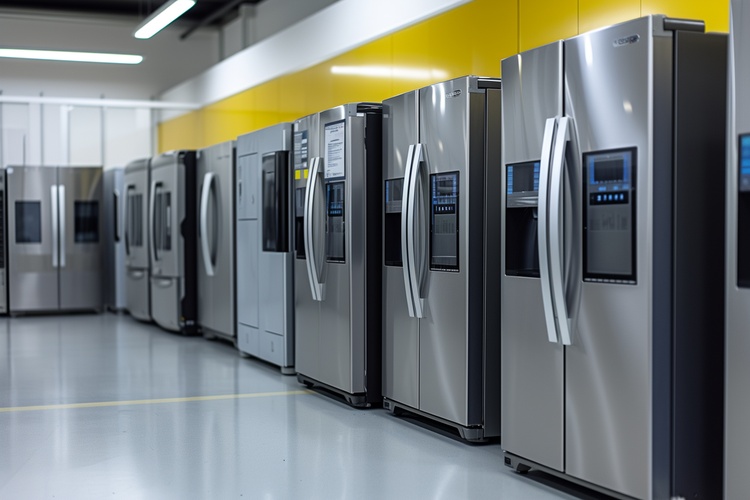Smart Trash Can: Touchless, Motion-Sensor Waste Disposal
A smart trash can is a household or commercial bin equipped with sensors, connectivity, and controls that change how people handle waste. These devices combine motion detection, touchless operation, and intelligent features to reduce contact, contain odors, and streamline waste disposal workflows. This article explains how smart technology reshapes everyday disposal habits, what features to look for, and practical considerations for buying and maintaining a smart bin.

How does smart technology improve a trash can?
Smart technology in a trash can brings automation and connectivity to a familiar object. Sensors and microcontrollers allow the lid to open automatically, schedule maintenance alerts, or send status updates to a companion app. Connected models can track fill levels, helping households and businesses avoid overflow and optimize pickup routines. For multi-bin systems, smart technology can identify the type of waste or prompt users about recycling and composting guidelines, improving overall waste sorting.
Smart capabilities also let users integrate the trash can with home automation platforms. For example, a can could pause motion-triggered openings during cleaning cycles or silence alerts at specified times. These integrations aim to make waste disposal a less visible and less disruptive part of daily life, while giving property managers and homeowners useful data about usage patterns.
How do motion sensor and touchless features work?
Motion sensor operation typically uses infrared or ultrasonic detection to sense a hand or object approaching the opening. When the sensor detects movement within its range, it sends a signal to a motor that opens the lid; after a short delay or once motion ceases, the lid closes automatically. Touchless systems reduce the need for direct contact with the trash can, lowering germ transmission and making disposal easier when hands are full.
Some models combine motion sensors with capacitive or proximity sensors to reduce false triggers and conserve battery life. Power options include replaceable batteries, rechargeable packs, or AC adapters. In higher-use settings, choosing a model with reliable sensor calibration and durable motors is important to maintain responsiveness over time.
How does a smart trash can affect waste disposal routines?
Introducing a smart trash can can subtly change waste disposal behavior. Touchless lids and odor-containment systems encourage more consistent use, while fill-level alerts and automated bag reminders reduce overflow incidents. For households that separate recycling and compost, smart prompts or color-coded indicators can improve sorting accuracy and lower contamination rates in recycling streams.
In commercial settings, smart bins can feed data to cleaning and maintenance teams, enabling scheduled pickups based on actual usage instead of fixed intervals. This efficiency can reduce labor and vehicle trips, and improve hygiene in public spaces. However, success depends on adoption—users must understand and trust the system for it to meaningfully shift routines.
What other features should you consider besides touchless design?
Beyond touchless and motion sensor operation, look for build quality, capacity, bag management, and odor control. Stainless steel or heavy-duty plastics resist stains and damage, while inner buckets or roll dispensers make bag changes quicker. Some smart trash cans include carbon filters, sealed lids, or UV-light odor-reduction systems to help control smells.
Additional features include voice control compatibility, manual override options, and modular replacements for parts like motors or lids. For battery-powered models, consider battery life and charging convenience. For apartment buildings or offices, evaluate whether a model supports networked management tools or has a professional maintenance plan through local services.
Where can you find support, repairs, or local services for smart trash cans?
Support and maintenance for smart trash cans are available through a mix of manufacturer warranties, local appliance repair shops, and specialized facility-services providers. Many manufacturers offer online troubleshooting, replacement parts, and customer support portals. For businesses, facility-management companies or waste-disposal contractors in your area may provide installation, scheduled servicing, and integration with existing waste management systems.
When seeking local services, ask about experience with sensor-equipped hardware, warranty handling, and parts availability. Regular maintenance tasks include sensor cleaning, motor lubrication or replacement, and filter changes. If your building uses several smart units, consider a service contract that covers routine checks and rapid response to failures to keep waste disposal operations consistent.
Conclusion
Smart trash cans combine motion sensor detection, touchless operation, and connected features to make waste disposal cleaner and more efficient. They influence user behavior, help control odors, and provide data that can improve collection and maintenance schedules. Selecting the right model involves balancing capacity, durability, power options, and support availability, and understanding how a smart bin will fit into existing household or facility workflows.





